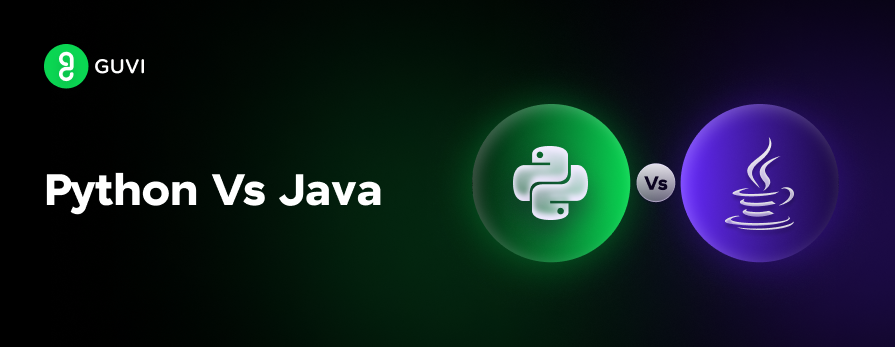
The Evolution of Java: A Journey Through Time
Oct 09, 2024 3 Min Read 1328 Views
(Last Updated)
Java is one of the most influential programming languages in history, shaping the modern digital world through its adaptability, platform independence, and robustness.
Since its inception in the mid-1990s, Java has gone through various phases of evolution, responding to the changing needs of developers and the tech industry at large.
Let’s take a journey through the evolution of Java, from its humble beginnings to its status as a programming powerhouse.
Table of contents
- The Evolution of Java: A Journey Through Time
- The Birth of Java: 1991–1995
- Early Days and Java 1.0: 1996–1999
- The Rise of Enterprise Java: 2000–2004
- Java 5 and the Era of Generics: 2004–2010
- The Oracle Acquisition and Java 7 & 8: 2010–2017
- The Modern Java: Java 9 and Beyond (2017–Present)
- Java in the Future
- Conclusion
The Evolution of Java: A Journey Through Time
1. The Birth of Java: 1991–1995
Java’s story starts in 1991 when James Gosling and a team at Sun Microsystems began a project called “The Green Project.” Their goal was to create a language for consumer electronics like interactive televisions and home appliances. The original language was named Oak, after an oak tree outside Gosling’s office.
However, Oak wasn’t very successful in the consumer electronics market. Around 1994, the team realized their language could be revolutionary for the emerging web.
The World Wide Web was rapidly growing, and they needed a language that was platform-independent—meaning it could run on any device, regardless of the operating system. Thus, Oak evolved into Java, a name inspired by Java coffee, symbolizing the energy and ambition of the project.
In 1995, Sun Microsystems officially launched Java, and it came with the promise of “Write Once, Run Anywhere” (WORA). This meant that Java programs could run on any device or operating system that had a Java Virtual Machine (JVM).
2. Early Days and Java 1.0: 1996–1999
Java 1.0 was released in 1996, marking the language’s debut into mainstream programming. Its key features include:
- Platform Independence: Thanks to the JVM, developers could write code that could run anywhere, regardless of hardware or software.
- Automatic Memory Management (Garbage Collection): This removed the burden of manual memory management, reducing errors like memory leaks.
- Built-in Security: Java was designed with security in mind, making it ideal for web-based applications.
Java quickly gained popularity, especially in web development with applets (small applications that ran in a web browser). By 1999, Java had become a significant player in the enterprise software space, largely due to its scalability and reliability.
3. The Rise of Enterprise Java: 2000–2004
The early 2000s saw Java moving from web browsers to enterprise-level applications. This was the era of Java 2 Platform, Enterprise Edition (J2EE), which became the standard for building large-scale, distributed systems.
J2EE introduced:
- Servlets and JSP (JavaServer Pages): Enabling dynamic web content.
- Enterprise JavaBeans (EJB): Simplifying the development of large, distributed systems.
- APIs: A growing number of APIs were added to the language, helping developers build powerful, scalable enterprise solutions.
Java became the go-to language for building secure, scalable, and high-performance applications, especially for large organizations like banks and government systems.
4. Java 5 and the Era of Generics: 2004–2010
Java 5, released in 2004, was a significant milestone in Java’s evolution. It introduced several important features that made the language more powerful and easier to use:
- Generics: Allowed for more type-safe collections and cleaner code.
- Annotations: Enabled meta-programming by attaching metadata to code.
- Enhanced for-loop: Improved the iteration over collections, simplifying code.
- Concurrency utilities: Enhanced Java’s ability to handle multiple threads.
The introduction of these features reflected Java’s response to both modern programming trends and increasing competition from languages like C#.
5. The Oracle Acquisition and Java 7 & 8: 2010–2017
In 2010, Oracle Corporation acquired Sun Microsystems, the original developer of Java. This acquisition led to new developments in the language but also raised concerns over Java’s future direction.
In 2011, Java 7 was released. It focused on improving performance, adding features like:
- Try-with-resources: To manage resources more efficiently.
- Switch on strings: Making code more readable.
- Fork/Join framework: For better parallel processing.
However, it was Java 8 (released in 2014) that marked a major shift in the language. It introduced Lambda Expressions, which enabled functional programming in Java. Other key features included:
- Stream API: Allowed for efficient manipulation of collections.
- Optional: Helped avoid null pointer exceptions.
- New Date and Time API: Replacing the old, cumbersome date handling in Java.
Java 8 became one of the most popular versions of Java and remains widely used today.
6. The Modern Java: Java 9 and Beyond (2017–Present)
Java has shifted to a faster release cycle since Java 9, with new versions arriving every six months. Each release focuses on improving performance, security, and developer productivity. Some notable versions include:
- Java 9 (2017): Introduced the module system (Project Jigsaw), which allowed for better organization of large codebases.
- Java 10 and 11: Java 11, a long-term support (LTS) release, brought modern features like local variable type inference (var), HTTP Client API, and enhanced garbage collection.
- Java 17 (2021): Another LTS version, Java 17 brought refinements like sealed classes, pattern matching, and enhancements to performance.
These recent versions are part of Oracle’s commitment to keeping Java relevant in a fast-evolving tech landscape. The LTS (Long-Term Support) versions like Java 11 and Java 17 have become industry standards for enterprises that prioritize stability.
7. Java in the Future
Java’s future looks bright. With its commitment to regular updates and community-driven evolution, Java continues to adapt to modern development needs. The rise of cloud computing, big data, and AI keeps Java relevant, as its mature ecosystem and rich libraries provide tools for these emerging fields.
Java will continue to evolve, balancing innovation with its core principles of reliability, security, and portability.
In case, you want to learn more about Java Full stack development and how to become one, consider enrolling for GUVI’s Certified Java Full-stack Developer Course that teaches you everything from scratch and make sure you master it!
Conclusion
In conclusion, Java’s journey from a language designed for interactive televisions to the backbone of enterprise systems and web applications is nothing short of remarkable. Over three decades, Java has evolved to meet the demands of developers, companies, and technology at large.
Its versatility and constant innovation have allowed it to remain relevant in a fast-changing programming landscape, and as it continues to grow, Java’s legacy will only strengthen further.






























Did you enjoy this article?